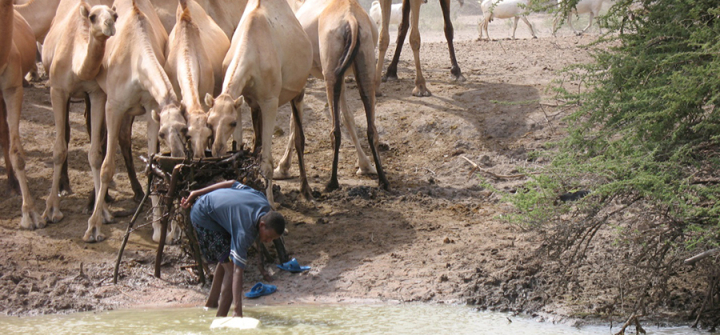What's the Difference? The Meaning of One Health
If you’re just testing your interest in population-level health or you’re a veteran public health-er, you may be a bit bewildered by the proliferation of the various “healths:” public health, global health, planetary health, one health… The differences can be squishy, the distinctions cloudy or monumental.
No worries! Global Health NOW is here to help. In this “What’s the Difference?” series, Marija Cemma, PhD, explains the disciplines based on research and interviews with global experts. We hope this will both clarify things as well as spur discussion on social media (see our Facebook page and Twitter feed), or in the comments section below.
We close out the series with One Health.
One Health
William B. Karesh, DVM, EcoHealth Alliance’s executive vice president for Health and Policy, coined the term One Health as reported in a 2003 newspaper article on Ebola. The term is meant to spotlight the nexus between human health, animal health, and ecosystems and to bridge the silos between ecology and human and veterinary medicine.
One Health focuses heavily on antimicrobial resistance, food safety, and infectious diseases, whether they “spill over” from animals to humans or vice versa and how the emergence of infectious diseases are associated with changes in land-use and human activities such as agriculture, food production, travel and trade. Over 60% of emerging infectious diseases—including Ebola, HIV/AIDS and Avian influenza—derive from animal hosts. It is estimated that over 15 million people succumb to emerging infectious diseases each year.
Here’s how EcoHealth Alliance, an international non-profit dedicated to a One Health approach to protecting human, animal and environmental health from emerging infectious diseases, defines One Health: “The One Health perspective incorporates human, domestic animal, wildlife, and ecosystem health and has the potential to lead to effective solutions and save lives.”
WHO adopts a more public-health oriented lens, defining One Health as “an approach to designing and implementing programmes, policies, legislation and research in which multiple sectors communicate and work together to achieve better public health outcomes.” It further specifies the relevance of One Health for the control of zoonoses, antibiotic resistance and food safety.
One Health in Action
The One Health approach has been embraced by politicians. The G20 Health Ministers included it in their 2017 Berlin Declaration, “Together Today for a Healthy Tomorrow.” And international organizations, such as WHO, World Animal Health Organization (OIE) and the World Bank, also back it.
But what does this rhetoric translate to on the ground? Karesh notes that, “There are so many great examples and opportunities of One Health in action but let me give you one that stands out in my mind. In 2002, there was a die-off of mountain gorillas diagnosed as measles and linked to human outbreaks in communities surrounding a national park in Rwanda, Uganda and Democratic Republic of Congo. A response paradigm was implemented, involving a tremendous effort to vaccinate as many gorillas as possible. A more prevention oriented One Health approach evolved over time that includes partnerships across human and animal health at both policy levels and primary health care for local communities, park employees, their families and tourists to reduce the burden of communicable diseases and reduce risk to gorillas.”
The USAID Emerging Pandemic Threats publication, One Health in Action, describes other successful One Health examples.
Despite tangible results on the ground, there are real barriers in achieving One Health: namely vertical funding and incentive structures. Some serious silo-busting is required to keep moving this concept forward.
Useful Resources
- One Health Day video with William B. Karesh, DVM:
- One Health Initiative website
- EcoHealth Alliance blog “What we mean when we say One Health”
- USAID Emerging Pandemic Threats publication, One Health in Action
- David Quammen, Spillover: Animal Infections and the Next Human Pandemic (book)
Join the thousands of subscribers who rely on Global Health NOW summaries and exclusive articles for the latest public health news. Sign up for our free weekday enewsletter, and please share the link with friends and colleagues: http://www.globalhealthnow.org/subscribe.html
Camels drinking at a water pan in Wajir county in Kenya. Image by ILRI/George Wamwere-Njoroge/Flickr Creative Commons License




